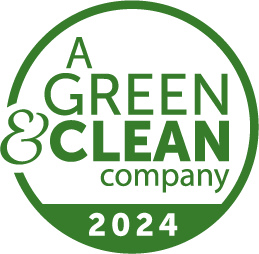The Badger's Lawn Guide
Applicable Region
Badger Lawn Services serves a portion of the southern piedmont region of Virginia, a region which includes the counties of Amherst, Appomattox, Bedford, Brunswick, Campbell, Charlotte, Franklin, Halifax, Henry, Lunenburg, Mecklenburg, Nottoway, Patrick, Pittsylvania, and Prince Edward, those portions of Dinwiddie, Greenville, and Sussex Counties east of the fall line, and the independent cities of Danville, Lynchburg, and Martinsville.
When planning and maintaining your lawn, be sure to read and obey all applicable local ordinances, many of which are linked above. Most geopolitical jurisdictions have ordinances pertaining to such things as
- weed control;
- noxious weed control, as specifically authorized by Section 15.2-902 of the Code of Virginia regulating
- Johnson grass (Sorghum halepense),
- multiflora rose (Rosa multiflora),
- musk thistle (Carduus nutans L.), and
- curled thistle (Carduus acanthoides L.);
- running Bamboo (genus Phyllostachys) control, as specifically authorized by the Section 15.2-901.1 of the Code of Virginia;
- accumulation of rubbish, trash, refuse, junk, and other abandoned materials, including clutter as defined and permitted under Section 15.2-901 of the Code of Virginia; and
- conditions which provide harborage for rats, mice, snakes and other vermin.
Lawn Turf Grass
Sod
Bass Sod Farm, located in Gladys, is an excellent local source of sod. Follow their instructions regarding installation. Note that a full pallet of sod weighs around 2500lbs, so plan accordingly.
Seed
Growing grass from seed is an alternative to installing sod. In this region, you are likely to have the best results if you mix 10% to 15% (by weight) Kentucky Bluegrass (Poa pratensis) with 90% to 85% (by weight) Tall Fescue (Festuca arundinacea). Other varities, such as Chewings Fine Fescue (Festuca rubra commutata), Hard Fine Fescue (Festuca brevipila), and Perennial Ryegrass (Lolium perenne), are also possibilities. You might even try Bermudagrass (Cynodon dactylon) or Zoysiagrass (Zoysia japonica).
Ask a qualified provider of certified seed to help you select the best cultivars. Some known cultivars are listed alphabetically in the table below, each along with a link to a randomly-selected (not necessarily the lowest-priced) seed supplier. Note that we have not included any big-box home improvement retail stores as qualified seed suppliers.
| Kentucky Bluegrass | After Midnight |
| Kentucky Bluegrass | Babe |
| Kentucky Bluegrass | Blue Coat |
| Kentucky Bluegrass | Blue Note |
| Kentucky Bluegrass | Bolt |
| Kentucky Bluegrass | Endurance |
| Kentucky Bluegrass | Legend |
| Kentucky Bluegrass | Midnight |
| Kentucky Bluegrass | Pivot |
| Kentucky Bluegrass | Selway |
| Kentucky Bluegrass | Skye |
| Kentucky Bluegrass | Starr |
| Kentucky Bluegrass | Tirem |
| Kentucky Bluegrass | United |
| Kentucky Bluegrass | Yellowstone |
Fertilizer
Like all other voluntary participants in the Virginia Department of Conservation and Recreation Green & Clean Initiative, Badger Lawn Services believes that lawns and other grounds should be maintained in an environmentally responsible manner and strives to educate property owners in environmentally-friendly methods of lawn care and maintenance.
The proper management of fertilizers on turf and landscape areas helps prevent the accumulation of excess nutrients in ground and surface waters. Accumulation of nutrients in groundwater used as a drinking water source can pose public health risks. Excess nutrients in surface waters upset the natural balance needed for healthy and productive rivers, lakes, and streams. Nutrient-enriched waters are prone to algal blooms and depletion of oxygen, resulting in a water body incapable of supporting fish and other aquatic organisms.
Fertilizers should be applied according to the standards set forth in Chapter 85 of the Virginia Administrative Code. Always remember to
- perform a soil test and follow recommendations for phosphorus and potassium applications;
- keep a record of each fertilizer application, including the analysis (10-10-10, etc.) of the fertilizer applied as well as its percentage of slow-release nitrogen;
- refrain from applying fertilizers to frozen ground or non-actively growing turfgrass;
- refrain from applying more than (0.7) pounds of water soluble nitrogen per 1,000 square feet within a 30-day period;
- refrain from applying more than (3.5) pounds per 1,000 square feet of water-soluble nitrogen per year to cool season turfgrass, like Tall Fescue (Festuca arundinacea) or Kentucky Bluegrass (Poa pratensis);
- refrain from applying fertilizers to impervious surfaces such as sidewalks, driveways, and streets; and
- refrain from using fertilizers as ice melt.
Utilize Native Species
Please consider using Virginia native plants in your lawn and gardens. Native plants improve aesthetics by offering an appealing display of foliage and flowers while protecting water quality and quantity, increasing carbon dioxide absorption, and enhancing wildlife habitat.
Plant Virginia Natives is a collaborative initiative that has engaged over 200 organizations in state-wide and regional marketing strategies to increase the use and availability of native plants. The organization offers a number of publictions, free for download via our Badger Lawn Guide website:
- A Guide To Native Ferns
- How To Plan and Implement A Hummingbird Garden
- How To Plan and Implement A Pollinator Garden
- How To Plan and Implement A Shade Garden
Many other organizations, including the Virginia Native Plant Society, the Virginia Department Of Conservation And Recreation Natural Heritage Program, the Virginia Department Of Wildlife Resources, and the Blue Ridge Soil and Water Conservation District can help you utilize native and indigenous plant species.
Services are offered by BT OC Timberlake LLC d/b/a Badger Lawn Services, a Virginia Limited Liability Company. Copyright © 2024, BigTime Venues, Ltd. All rights reserved. The Badger Loop is a trademark of BigTime Venues, Ltd. d/b/a Apex Intellectual Properties and may be registered in Virginia, the United States of America, and elsewhere.

